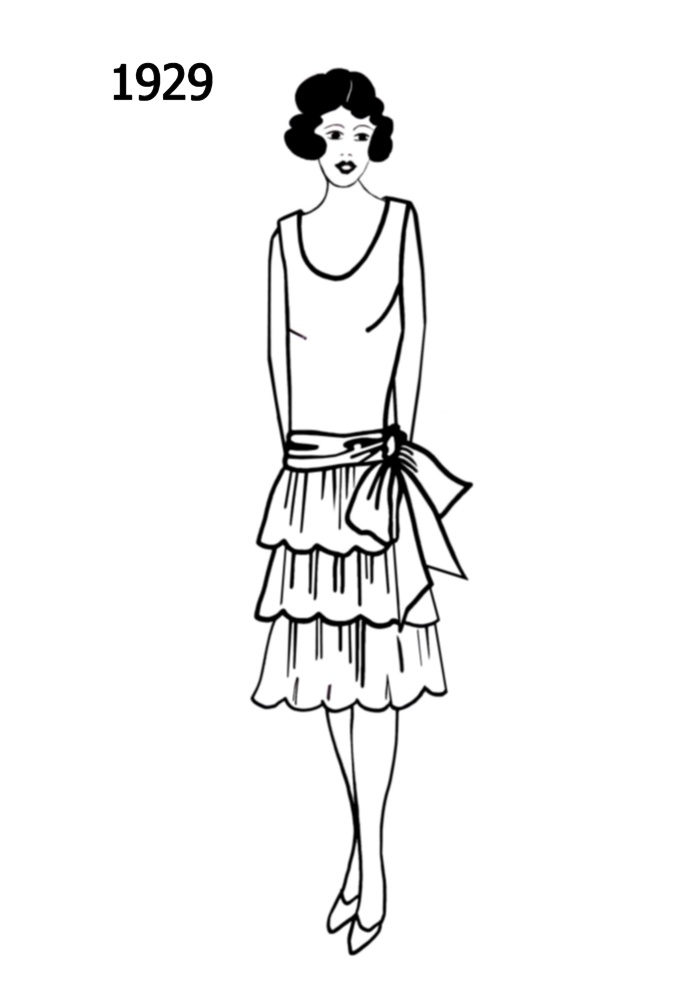Goldberg's Most Unforgiveable Offense
Goldberg's response to David Neiwert's review of his book reinforces this impression. He dismisses fascist anti-liberalism as given in "a European context where liberalism generally means limited government: classical or “Manchester” liberalism. They were most emphatically not talking about progressivism or socialism, which are the correct label for American liberalism." Goldberg is similarly dismissive of "socialist, communist and other left-wing political prisoners" (Neiwert's words) who were victims of the Nazis. "[T]he Nazis were determined to destroy their competition. That is why they hated the Communists. The propaganda that says the Nazis were the opposites of the Communists because they hated each other is idiotic." But this, too, ignores the reality of German politics at the time.
To take a quick (Enlightened Layperson's) review of political parties in Weimar Germany, German political parties were not like parties in the United States. The United States has two loosely organized parties that each represent a wide range of views and interests and do not (traditionally) impose a strict "party line." Weimar Germany had numerous narrow, ideologically based, tightly disciplined parties, none of which ever controlled a majority in Parliament. Until the rise of the Nazi Party, the Social Democrats were the largest party, and typically held 20-30% of the seats in Parliament. Government was necessarily by coalition of two or more parties. The following were the major parties under the Weimar Republic (from left to right):
Communist (KDP): Needs little explanation. The Communists took their orders from Moscow and opposed the Weimar Republic, wanting instead to establish a Soviet-style dictatorship with a government-controlled command economy.
Social Democrats (SDP or Socialists): The Social Democrats were the real founders of the Weimar Republic and its most loyal supporters. They strongly opposed the Communists and, in the early days of the Republic, resorted to military force to put down Communist rebellions. Although nominal socialists, they were actually more inclined to support a modified version of capitalism -- support for unions, union reprepresentation in boards of directors, unemployment insurance, and the 8-hour day. This was, nonetheless, one of the most advanced welfare systems of its day.
German Democratic Party (DDP): A middle class liberal party, loyal to democracy and the Weimar Republic and opposed to nationalism and bigotry, thought it never developed a coherent economic policy. The DDP came in third with 18.6% of the vote in the initial 1919 elections, but rapidly declined afterward into insignificance.
Center (Zentrum): This was a Catholic party and truly a party of the center. It sometimes leaned left for a coalition with the Social Democrats and sometimes right for coalition with the DVP, but always remained loyal to the Weimar Republic and the Catholic Church.
German People's Party (DVP):* The DVP was a conservative party, wavering between classical liberal and monarchist. Its platform promoted Christian family values, secular education, lower tariffs, opposition to welfare spending and agrarian subsides, and hostility to "Marxism" (that is, the Communists, and also the Social Democrats). Its attitude toward the Weimar Republic was ambivilent -- it intially leaned toward monarchism, but later became more friendly toward democracy.
German National People's Party (DNVP, National Party): This was a reactionary party, hostile to the Weimar Republic. Originally Kaiserist, the DNVP later leaned more toward military dictatorship. It was nationalistic in matters of foreign policy, opposed the Treaty of Versailles, and had considerable support from the large landowners and industrialists.
Minor parties: These were a mixed bag, consisting mostly of conservative and farmers parties.
And then, of course, there were the Nazis. The Nazis were not a signficant power in the 1920's. Their rise began with the onset of the Great Depression. Heinrich Bruning, Chancellor at the outset of the Depression, belonged to the right wing of the Center and pursued fiscally tight polices, cutting welfare payments and seeking to shore up declining revenues, hoping this would turn around the economy. Whatever the merits of this approach in the long run, it caused great hardship in the short run, paving the way for the spectacular rise of the Nazis. In the 1928 elections, the Nazis received an insignificant 2.6% of the vote. By 1930 their share had gone up to 18.3%, second only to the Social Democrats. And in July, 1932, the Nazis polled 37.3% of the vote to make them the largest political party.
To grow so rapidly, the Nazis had to be winning adherents away from other parties. Who these new followers were can be measured by which parties were shrinking as the Nazis grew. The answer is embarrassing to Goldberg. This conservative historian explains:
It is true that the Nazis and the Communists attracted a good deal of the same sort of bully-boys. But the increase in the Nazi vote in the late 1920s correlates closely with the collapse of the vote for the DNP and DNVP—rightist parties—and the political space they fought to control was on the right. Furthermore, the Socialist vote, and the SPD, remained remarkably cohesive through to 1933 . . . The collapse of the rightist parties of Germany under the pressure of Nazism, and the resilience of the Social Democrats, minimizes or contradicts Goldberg’s thesis.A picture is worth a thousand words. Consider this graph, showing the number of seats each party had in the 1928, 1930 and 1932 elections:
 The Nazis (light blue bar) go from practically non-existent to dwarfing all others, but the Social Democrats (yellow) experience only a modest decline. Still, this chart understates the Social Democrats' decline because it shows the number of seats held by each party, when the total number of seats was expanding. It may not clearly show what happened to the other parties. These pie charts show the distribution of seats over those same years:
The Nazis (light blue bar) go from practically non-existent to dwarfing all others, but the Social Democrats (yellow) experience only a modest decline. Still, this chart understates the Social Democrats' decline because it shows the number of seats held by each party, when the total number of seats was expanding. It may not clearly show what happened to the other parties. These pie charts show the distribution of seats over those same years: Once again, the Nazis (very light blue) are shown making a spectacular increase. The Social Democrats (yellow) do, indeed, show a decline. However, this decline is within the normal range of variation, comparable to the SDP's share of the vote in the May 1924 elections. The Communists (medium blue, just above the Social Democrats), increase slightly. The Catholic Center Party (purple) is almost unchanged.** This means that the Nazis were not winning adherents away from the Communist or Catholic parties. They were probably winning some adherents from the SDP (as were the Communists), but most members of the SDP remained.
Once again, the Nazis (very light blue) are shown making a spectacular increase. The Social Democrats (yellow) do, indeed, show a decline. However, this decline is within the normal range of variation, comparable to the SDP's share of the vote in the May 1924 elections. The Communists (medium blue, just above the Social Democrats), increase slightly. The Catholic Center Party (purple) is almost unchanged.** This means that the Nazis were not winning adherents away from the Communist or Catholic parties. They were probably winning some adherents from the SDP (as were the Communists), but most members of the SDP remained.But look at the other parties. In 1930 one can see the growth of the Nazis is matched by a shrinking of the hard right National Party (deep blue) and the moderate right DVP (pink). And in 1932 the Nazi party practically devours the small conservative and farmers parties' share of the vote (black) while the DVP and DDP are nearly squeezed out.
Hitler came to power, of course, when the Nationals (DNVP), who trusted neither democracy nor the Nazis, grudgingly agreed to a coalition with Hitler as Chancellor. New elections followed, but, despite all the Nazi's violence and suppression against their opponents, they failed to win a majority. Hitler needed a 2/3 vote to pass the Enabling Act, the act that effectively ended the Weimar Republic and made him dictator. The combined Communist, Social Democratic and Center parties were large enough to block such an act.
Hitler recognized it would be futile to attempt to persuade the Communists or Social Democrats, so he simply had all the Communist deputies and some of the Social Democrats arrested to prevent them from voting. He entered into negotiations with the Center, offering concessions to the Catholic Church in return for support. Though not trusting Hitler, the party leadership believed (no doubt realistically) that Hitler would assume total power even if they opposed the Act, so it was safer to go along. Many members, espcially Bruning strongly opposed the Act, but all yielded to party discipline and voted for it. (Bruning later went into exile).
On the day of the vote, the Parliament assembled under intimidating circumstances. Many of the bill's opponents had already been arrested, and SA (stormtroopers) surrounded the building. Otto Wels, head of the Social Democratic Party, spoke out against the bill, but no one else dared. The Center kept its devil's bargain, and any members of minor parties who might have opposed the Act were intimidated into silence by the SA present. All 94 Social Democrats present voted against the Enabling Act. All other deputies voted in favor.
So, if Goldberg gave any serious thought to German politics of Hitler's day, what would he make of all this? What does it say about his thesis that the Nazis were really socialist and left-wing, that their opposition to Communism was an intramural rivalry, and that the (only) true ideological opposite to fascism is pure free market classical liberalism?
In one sense, I suppose Goldberg could claim this as vindication. Of all parties in Germany, only the right wing of the Center could qualify as true classical liberal. The DVP were pro free-market and capitalist, only half-hearted supporters of democracy. The Social Democrats and left wing of the Center were whole-hearted supporters of democracy, but not of free enterprise. And the DDP, besides being too small to count, did not know where it stood economically. Perhaps Goldberg could attribute the rise of the Nazis to the absence of any true classical liberal alternative. But then again, if there were so few true classical liberals in Germany, why would Hitler consider even consider them worth hating?
Perhaps because Hitler defined liberalism more broadly than Goldberg does.
"Classical liberalism" indeed involved limited government and, more importantly, laissez-faire economics, the things that most make it an important antecedent of modern conservatism. But it also involved, just as significantly, the primacy of the rule of law and democratic institutions, the advancement of civil liberties and civil rights, and freedom from restraint -- things all very much part of the basic strains of modern liberalism.They were also very much part of the basic strain of the Center Party (left wing included), and of the Social Democrats. But the Social Democrats favored interventionist economic policy, greater social welfare (especially during the Depression) and the like. By Goldberg's standards, that makes them just "friendly fascists," their unyielding (and lonely) defense of democracy notwithstanding.
Note also that when Neiwert mentions the Nazi's persecution of "socialist, communist and other left-wing political prisoners," Goldberg's response mentions only Communists. He is, in effect, airbrushing out the Social Democrats. But they, too, suffered repression. Communists and Socialists alike were sent to prison and to concentration camps. Social Democratic officials were forced to resign, public employees were fired, and many rank-and-file Social Democrats were evicted from their homes or subject to police harrassment and frequent searches. Public employees who belonged to (classical) liberal, conservative, or Catholic parties were coerced into joining the Nazis by the threat of losing their jobs, but were not suspect in the same way that Social Democrats and Communists were.
In fact, if Goldberg's definition of fascism is broad enough to encompass the modern-day Democrats, there can be little doubt that the SDP would also be (inadvertently) caught in his net. In equating social democracy with fascism, Goldberg is (again, presumably inadvertently) repeating Stalin's monstruous lie that Social Democrats were merely "social fascists," and that the two were "not antipodes, but twins." Of course, Stalin and Goldberg make the argument for opposite reasons. To Goldberg, anyone who favors interventionist economic policies is a fascist for opposing the free market. To Stalin, Social Democrats were mere apologists for capitalism. And doubtless it can be established that Social Democrats and fascists (as well as New Dealers) would agree on some (but not all) economic policies. But Nazis and Social Democrats were truly antipodes on the issue that mattered most of all -- respect for democratic norms and individual rights.
If Goldberg wants to dismiss that aspect of fascism (and Nazism) as insignificant in order to score a few cheap points in the context of US politics, well, American liberals and Democrats can afford a thick hide. We are not being menaced by jackbooted Storm Troopers, after all. But to every brave German Social Democrat who stood up for democracy when the conservatives went along with Hitler, to every Social Democratic martyr who paid the price with loss of home and job, harassment, persecution, exile, prison, torture or murder for defending the democracy no one else was willing, Goldberg owes an apology.
____________________
*Although post-WWII the Communists gave "people's" a left-wing feel, implying class struggle against the ruling class, in Weimar Germany "Volk" was a nationalistic term, and "people's parties" were therefore of the right.
**For the sake of simplicity, I lump the Center's Bavarian branch, the Bavarian Peoples Party (BVP) in with the Center, although the BVP was much less faithfully democratic than the Center. However, the BVP was a Catholic Party, and its share of the vote remained extremely stable, around 3%, throughout the rise of the Nazis.
Labels: fascism











